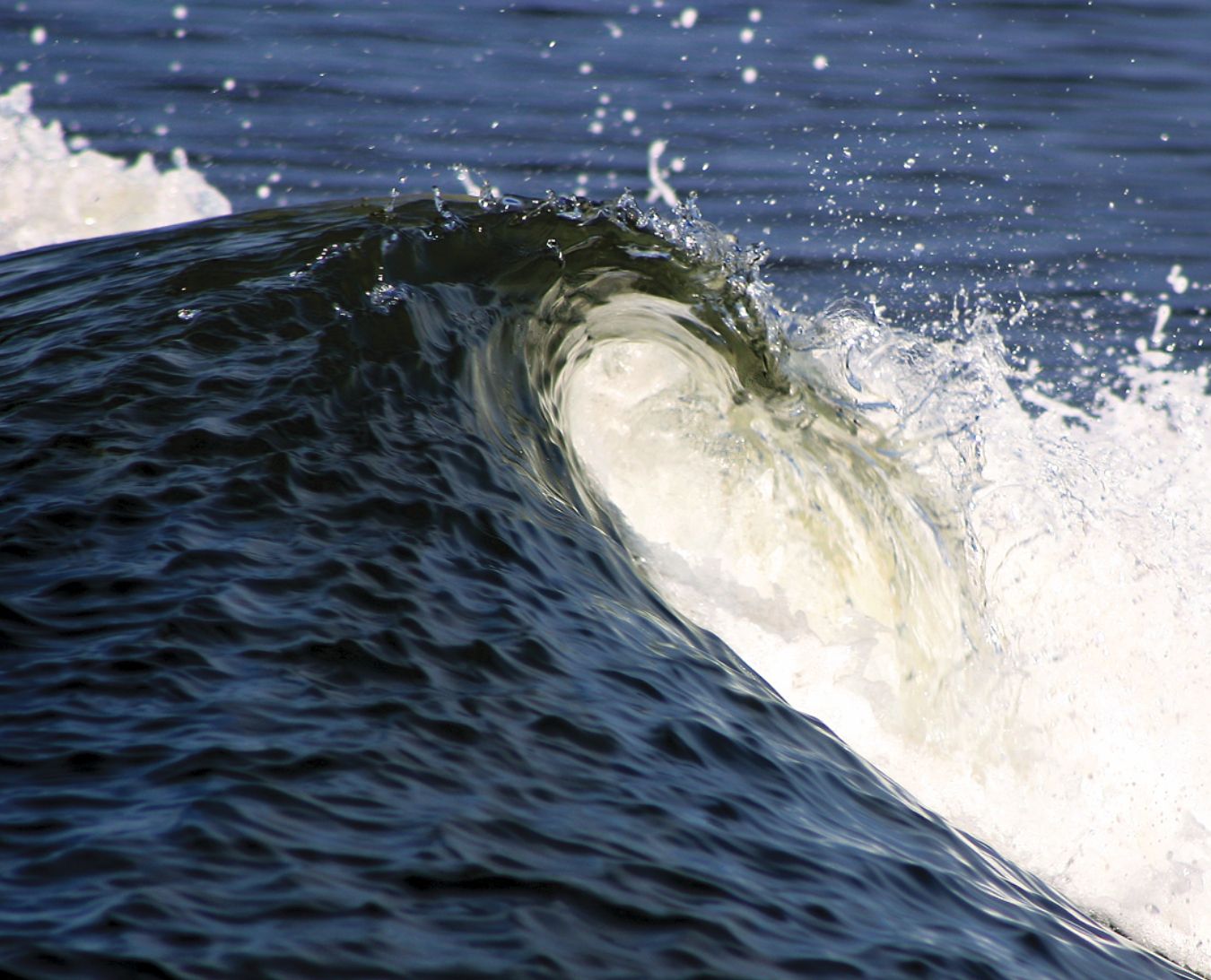Nobels neglect fluid dynamics
DOI: 10.1063/PT.3.4645
I was surprised to see that Philip Anderson’s obituary (Physics Today, June 2020, page 59
Since the 19th-century publication of the Navier–Stokes equations, the governing equations in fluid dynamics, many scientists have attempted to solve them. And well-known physicists have worked in different aspects of fluid mechanics. Arnold Sommerfeld, the noted theoretical physicist, had a passion for it, and his “school” was well known for work in it. 1 Much of that work related to stability, transition to turbulence, and lubrication.
Sommerfeld is supposed to have said that before he died he wanted to understand two phenomena—quantum mechanics and turbulence. Theodore von Kármán recalled in his autobiography that Sommerfeld was somewhat nearer to an understanding of the quantum but no closer to the meaning of turbulence. 2

Wake created by the ferry to Fanø, Denmark. Fluids are important to many processes, in nature and in human actions. Yet the study of fluid mechanics seems to garner few accolades. (Photo by Malene Thyssen, CC BY-SA 3.0

Werner Heisenberg, a star of quantum mechanics, did his 1924 PhD thesis, “On the stability and turbulence of fluid flow,” under Sommerfeld. After World War II, while he was interned at Farm Hall in the UK, Heisenberg contemplated the problem of turbulence stability and the transition to turbulence. 1 Three papers published in 1948 cover his work from that time period.
Outstanding efforts of stalwarts like Ludwig Prandtl, von Kármán, and G. I. Taylor provided the understanding and methodology to examine fluid flow, including turbulence and boundary layers. They thus laid the foundations of aerodynamics, and their work led to rapid development in aeronautics and astronautics.
The field of mechanics, especially fluid mechanics, has been routinely neglected in considerations for the physics Nobel Prize. The importance of the advances mentioned above and their benefit to society underscores the sidelining of the field. Taylor in 1935 privately complained about the Nobel Committee’s preference for “atomic physics,” owing to nominations being made by previous recipients. Believing that Prandtl should have been awarded a Nobel, Taylor wrote that the prize needed to be opened up to “non-atomic physicists.” 3 Von Kármán expressed similar thoughts regarding Prandtl’s deservedness. 4 The Nobel Committee’s dismissive attitude toward fluid mechanics continues to this day.
Although innovative techniques have created great progress in addressing the problem of turbulence, the general solution to the Navier–Stokes equations remains elusive. The importance and the difficulty of solving the problem of turbulence in fluid mechanics is highlighted by the fact that the Clay Mathematics Institute lists the existence and smoothness of Navier–Stokes solutions as one of its unsolved millennium problems. Let us hope that the one who solves it will win not only the $1 million reward but also the Nobel Prize in Physics.
References
1. M. Eckert, Annu. Rev. Fluid Mech. 47, 1 (2015). https://doi.org/10.1146/annurev-fluid-010814-014534
2. T. von Kármán, L. Edson, The Wind and Beyond: Theodore von Kármán, Pioneer in Aviation and Pathfinder in Space, Little, Brown and Co (1967), p. 134.
3. G. Batchelor, The Life and Legacy of G. I. Taylor, Cambridge U. Press (1996), p. 185.
4. Ref. 2, p. 40.
More about the Authors
Rajan Menon. (menonrajank@gmail.com), University of St Thomas, St Paul, Minnesota.
